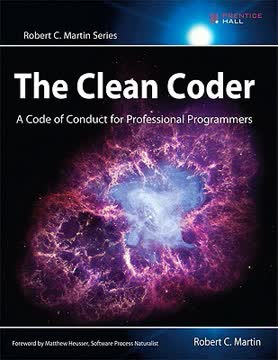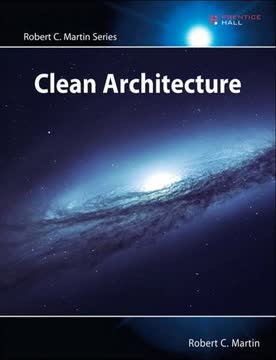Key Takeaways
1. Agile's origins: A response to ineffective, heavyweight processes
At that time, most software was created using ineffective, heavyweight, high-ritual processes like Waterfall and overstuffed instances of the Rational Unified Process (RUP).
Agile emerged as a solution. In February 2001, 17 software experts gathered in Snowbird, Utah, to address the deplorable state of software development. They created the Agile Manifesto, emphasizing:
- Individuals and interactions over processes and tools
- Working software over comprehensive documentation
- Customer collaboration over contract negotiation
- Responding to change over following a plan
This movement aimed to provide a lighter-weight, more effective approach to software development. It quickly gained popularity and has since become a mainstream methodology in the software industry.
2. The Iron Cross: Balancing good, fast, cheap, and done in project management
Good, fast, cheap, done: Pick any three you like. You can't have the fourth.
The Iron Cross illustrates trade-offs. This concept highlights the fundamental constraints in project management:
- Good: High-quality output
- Fast: Quick delivery
- Cheap: Low cost
- Done: Completed scope
A good project manager understands that these attributes have coefficients and manages them pragmatically. Agile helps by providing data for informed decision-making, such as:
- Velocity charts: Showing team productivity over time
- Burn-down charts: Indicating remaining work and projected completion dates
These tools enable managers to make adjustments and drive projects to the best possible outcomes.
3. Agile practices: Planning, small releases, acceptance tests, and whole team
The practice of Acceptance Tests is one of the least understood, least used, and most confused of all the Agile practices.
Key Agile practices drive success. These business-facing practices form the framework for effective Agile implementation:
-
Planning:
- Use story points for estimation
- Employ the Planning Game for prioritization
- Focus on delivering business value
-
Small Releases:
- Aim for frequent, incremental deliveries
- Strive for continuous delivery
-
Acceptance Tests:
- Specify requirements as automated tests
- Collaborate between business analysts, QA, and developers
-
Whole Team:
- Co-locate team members when possible
- Emphasize cross-functional collaboration
These practices foster trust and communication between business and development teams, helping to heal the traditional divide between these groups.
4. Technical practices: TDD, refactoring, simple design, and pair programming
Test-Driven Development is a rich and complex topic that will require an entire book to cover properly.
Technical excellence is crucial. Agile's technical practices are essential for maintaining high-quality software and sustainable development pace:
-
Test-Driven Development (TDD):
- Write tests before code
- Ensure code quality and maintainability
- Provide built-in documentation
-
Refactoring:
- Continuously improve code structure
- Maintain design integrity over time
-
Simple Design:
- Keep designs as simple as possible
- Follow Kent Beck's rules: Pass tests, reveal intent, remove duplication, decrease elements
-
Pair Programming:
- Collaborate in real-time
- Share knowledge and improve code quality
These practices help teams build robust, flexible software that can adapt to changing requirements and maintain high productivity over time.
5. Becoming Agile: Focusing on values and adapting to organizational culture
The transition from non-Agile to Agile is a transition in values.
Agile transformation is challenging. Successfully adopting Agile requires more than just following processes; it involves a shift in organizational culture and values:
- Courage: Embrace reasonable risk-taking
- Communication: Foster direct and frequent interactions
- Feedback: Seek and act on rapid feedback
- Simplicity: Strive for directness in code and communication
Organizations often struggle with this transition, particularly in middle management layers. Successful Agile adoption may involve:
- Creating new divisions with Agile values
- Allowing teams to "fake it" by conforming to management expectations while practicing Agile
- Focusing on individual and team-level transitions rather than full organizational transformation
6. The rise of Software Craftsmanship: Emphasizing technical excellence
Software Craftsmanship does not have practices. Rather, it promotes a perpetual search for better practices and ways of working.
Craftsmanship complements Agile. The Software Craftsmanship movement emerged in 2008 to address perceived shortcomings in Agile implementations:
- Well-crafted software: Emphasizing code quality and design
- Steadily adding value: Focusing on continuous improvement
- Community of professionals: Promoting knowledge sharing and mentorship
- Productive partnerships: Fostering professional relationships with clients
Software Craftsmanship promotes:
- Mastery of technical practices
- Continuous learning and improvement
- Professionalism in software development
While sometimes seen as separate from Agile, Craftsmanship shares many of Agile's core values and can be viewed as a complementary approach to achieving high-quality software development.
7. Agile's enduring relevance: Core principles remain crucial for software development
Those basics are old, tried, and true. No matter how much new fluff is added around the edges, those basics are still there, still relevant, and still the core of Agile software development.
Agile fundamentals endure. Despite evolving interpretations and implementations, the core principles of Agile remain crucial for effective software development:
- Focus on delivering value to customers
- Embrace change and adaptability
- Maintain technical excellence
- Foster collaboration and communication
These principles align with longstanding best practices in software engineering, echoing ideas from influential figures like Dijkstra, Knuth, and Booch. By remembering and adhering to these fundamentals, development teams can navigate the complexities of modern software projects and deliver high-quality results.
Last updated:
FAQ
What's "Clean Agile: Back to Basics" by Robert C. Martin about?
- Return to Agile Roots: The book aims to bring readers back to the foundational principles of Agile, emphasizing its original intent and practices.
- Historical Context: It provides a historical perspective on Agile, detailing its origins and evolution over the years.
- Core Practices: The book outlines essential Agile practices, focusing on simplicity and effectiveness in software development.
- Personal Insights: Robert C. Martin shares personal anecdotes and insights from his extensive experience in the software industry.
Why should I read "Clean Agile: Back to Basics"?
- Understand Agile's Essence: It helps readers grasp the core values and principles of Agile, which are often misunderstood or diluted.
- Practical Guidance: The book offers practical advice on implementing Agile practices effectively in software development teams.
- Learn from an Expert: Written by a co-author of the Agile Manifesto, it provides authoritative insights into Agile methodologies.
- Avoid Common Pitfalls: It highlights common misinterpretations and mistakes in Agile adoption, helping readers avoid them.
What are the key takeaways of "Clean Agile: Back to Basics"?
- Agile Fundamentals: Emphasizes the importance of returning to the basics of Agile, focusing on simplicity, communication, and feedback.
- Professionalism in Software: Stresses the need for professionalism and discipline in software development to meet reasonable expectations.
- Continuous Improvement: Encourages continuous learning and improvement in both technical skills and team dynamics.
- Agile Misinterpretations: Warns against the misinterpretation and misuse of Agile practices, advocating for a clear understanding of its principles.
How does Robert C. Martin define Agile in "Clean Agile: Back to Basics"?
- Small Teams, Small Projects: Agile is described as a discipline for managing small software teams and projects effectively.
- Iterative Process: It involves breaking down projects into iterations, allowing for continuous feedback and adjustment.
- Focus on Quality: Agile emphasizes maintaining high-quality standards through practices like Test-Driven Development and Refactoring.
- Data-Driven Management: Agile provides data to help managers make informed decisions about project scope, schedule, and quality.
What are the core Agile practices discussed in "Clean Agile: Back to Basics"?
- Test-Driven Development (TDD): Writing tests before code to ensure functionality and facilitate refactoring.
- Refactoring: Continuously improving code structure without changing its behavior to maintain simplicity and clarity.
- Continuous Integration: Regularly integrating code changes to detect and fix issues early.
- Pair Programming: Collaborating in pairs to enhance code quality and knowledge sharing.
How does "Clean Agile: Back to Basics" address common Agile misinterpretations?
- Clarifies Agile's Purpose: The book emphasizes Agile's original intent, focusing on small, iterative improvements rather than large-scale transformations.
- Warns Against Overcomplication: It cautions against adding unnecessary complexity to Agile practices, which can dilute their effectiveness.
- Highlights Professionalism: Stresses the importance of maintaining professional standards and discipline in Agile teams.
- Addresses Agile Hangover: Discusses the disillusionment that can occur when Agile is misapplied or misunderstood.
What is the significance of the Agile Manifesto in "Clean Agile: Back to Basics"?
- Foundation of Agile: The Agile Manifesto is presented as the foundational document that outlines the core values and principles of Agile.
- Historical Context: The book provides insights into the creation of the Manifesto and its impact on the software industry.
- Guiding Principles: It emphasizes the importance of adhering to the Manifesto's principles to achieve true Agile transformation.
- Misinterpretations: The book addresses how the Manifesto has been misinterpreted over time and seeks to clarify its original intent.
How does "Clean Agile: Back to Basics" suggest handling Agile transformations?
- Focus on Values: Emphasizes the need to align organizational values with Agile principles for successful transformation.
- Small Steps: Recommends starting with small, manageable changes rather than attempting large-scale overhauls.
- Continuous Feedback: Encourages regular feedback and adaptation to refine Agile practices over time.
- Avoiding Resistance: Discusses strategies for overcoming resistance from middle management and other stakeholders.
What role does professionalism play in "Clean Agile: Back to Basics"?
- Core Expectation: Professionalism is highlighted as a key expectation in Agile teams, ensuring quality and reliability.
- Discipline and Ethics: The book stresses the importance of maintaining discipline and ethical standards in software development.
- Continuous Learning: Encourages developers to continuously improve their skills and knowledge to uphold professional standards.
- Team Responsibility: Emphasizes the collective responsibility of the team to maintain high standards and cover for each other.
What are the best quotes from "Clean Agile: Back to Basics" and what do they mean?
- "Agile is a small discipline that helps small software teams manage small projects." This quote underscores the simplicity and focus of Agile on small, iterative improvements.
- "The only way to go fast, is to go well." Highlights the importance of quality and discipline in achieving speed and efficiency in software development.
- "We, programmers, rule the world." Reflects on the significant impact and responsibility of software developers in today's technology-driven society.
- "Hope is the project killer." Warns against relying on hope instead of data and feedback to manage software projects effectively.
How does "Clean Agile: Back to Basics" differentiate between Agile and other methodologies?
- Focus on Iteration: Agile is characterized by its iterative approach, allowing for continuous feedback and adaptation.
- Simplicity and Clarity: Emphasizes simplicity and clarity in both processes and code, contrasting with more complex methodologies.
- Professional Discipline: Stresses the importance of professional discipline and standards, which may be less emphasized in other methodologies.
- Data-Driven Decisions: Agile relies on data and feedback to guide decision-making, rather than rigid plans or processes.
How does "Clean Agile: Back to Basics" address the Agile hangover?
- Expectation Mismatch: Discusses the mismatch between expectations and reality in Agile transformations, leading to disillusionment.
- Focus on Process Over Engineering: Critiques the focus on process improvements without addressing underlying engineering challenges.
- Need for Technical Skills: Emphasizes the importance of developing technical skills alongside Agile practices to achieve true agility.
- Reconnecting with Agile's Roots: Encourages a return to Agile's foundational principles to overcome the hangover and achieve lasting success.
Review Summary
Clean Agile receives mostly positive reviews, praised for its back-to-basics approach and historical perspective on Agile. Readers appreciate the author's insights, especially regarding the original intent of Agile and its current misinterpretations. The book is seen as valuable for both newcomers and experienced professionals, offering clarity on Agile principles and practices. Some criticize it for repetition and lack of new content. Overall, it's considered an important read for those involved in software development, providing a refreshing take on Agile's core values and challenges.
Similar Books
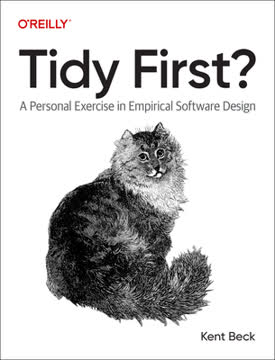


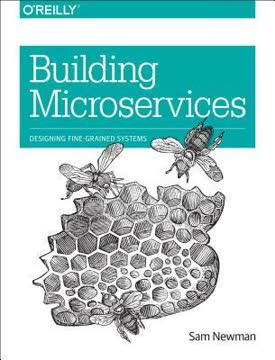
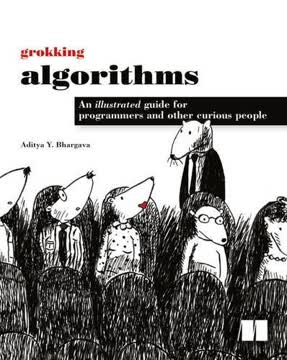
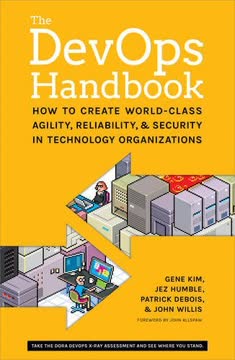
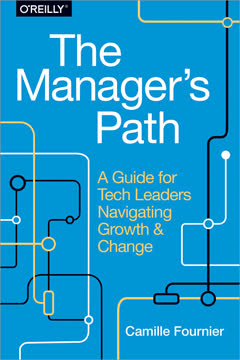
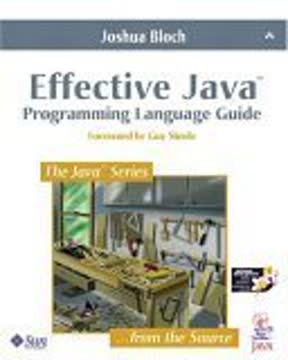
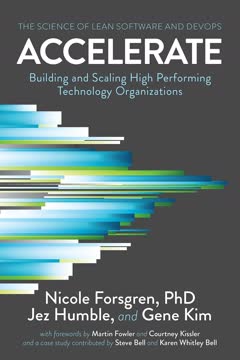

Download PDF
Download EPUB
.epub digital book format is ideal for reading ebooks on phones, tablets, and e-readers.


